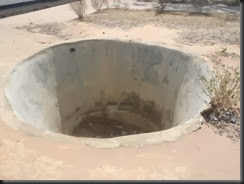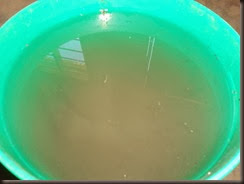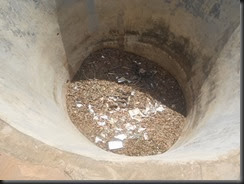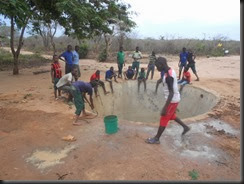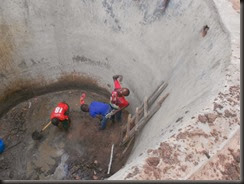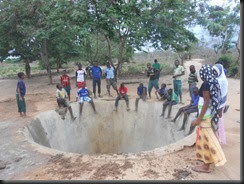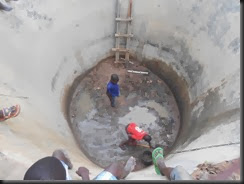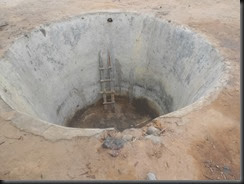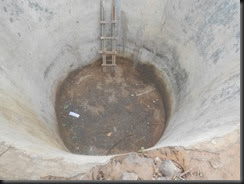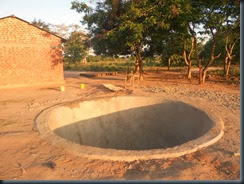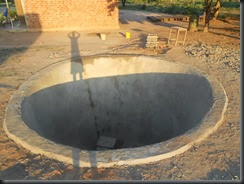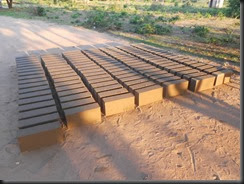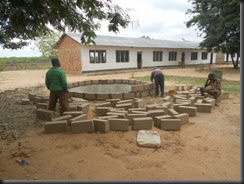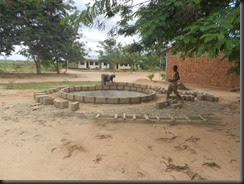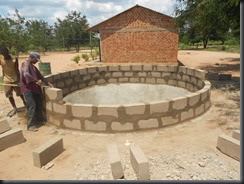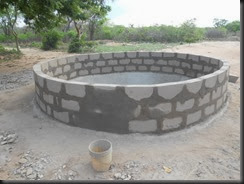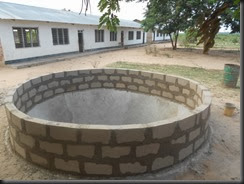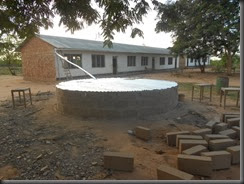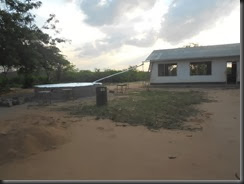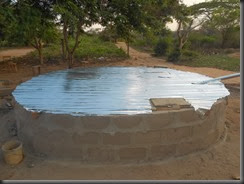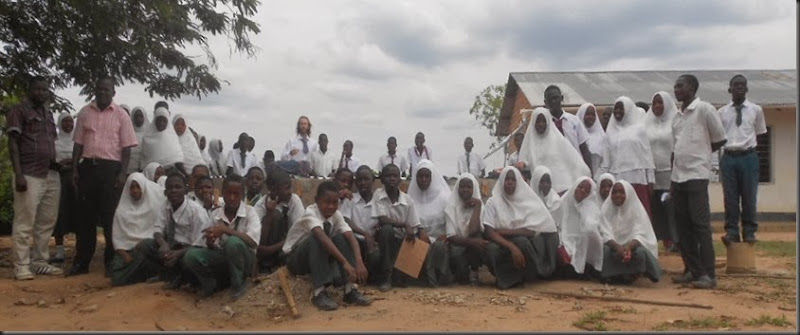Since arriving in Nitekela over a year ago, I’ve been keeping my eye out for possible project ideas that the students and teachers would want to take on as school projects. Seeing how dry things were last August and September, and how often students miss class to carry water from the valley to school, gave me some ideas. In January, I started some conversations with a few teachers and students, to feel out the reality of my observations. It seemed that (as I guessed), the shortage of water posed the biggest problem to the mental and physical health of the students. Over the next few months, I kept talking with teachers to see what we could do.
At the time, the only source of water was two 5,000 liter tanks on the office building, which are relatively new (2009, I believe). These are fine during the rainy season, as they are never fully depleted while it rains every few days. When the rains stop, however, they empty very quickly. Around the end of March, they were totally dry, which means students hike down the hill to the nearby valley to get buckets of water from one of the “wells” at the bottom. Students make the trip several times per week, bringing water to the teachers’ houses and using the remaining buckets to manually fill the two large tanks at the school. Since these tanks have no covers, they are occasionally emptied and refilled due to birds bathing and defecating inside. This doesn’t make much sense to me, since people drink the water from the “wells” without any kind of boiling or filtering, but I’ll leave that story for another time. For some reason, the spouts on the tanks are continually breaking, which poses more problems.
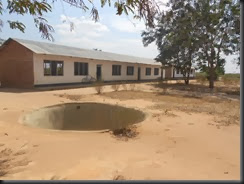 There was also a large cemented hole, about 3.5 meters across by 4 meters deep, unused and dilapidated between two of the classrooms, which caught my interest and my eye. When I asked about it, I was told it was built to collect runoff water from the classroom roofs. Instead of gutters, the water was supposed to just run off the roofs, along the ground, and into the tank. Even during the rainy season, it never collected much water, which meant that either it had many leaks or the nearby area was not landscaped well to direct the flow of water into the tank; most likely both. This was the beginning.
There was also a large cemented hole, about 3.5 meters across by 4 meters deep, unused and dilapidated between two of the classrooms, which caught my interest and my eye. When I asked about it, I was told it was built to collect runoff water from the classroom roofs. Instead of gutters, the water was supposed to just run off the roofs, along the ground, and into the tank. Even during the rainy season, it never collected much water, which meant that either it had many leaks or the nearby area was not landscaped well to direct the flow of water into the tank; most likely both. This was the beginning.
After months of worrying about the “right way” to get a project going, I called a friend who suggested to start with a small grant from Appropriate Projects, under Water Charity, while I worked on a larger grant through Peace Corps. Since the turn-around time for Water Charity is much shorter than larger grants, we could potentially finish a small project while the process for the larger grant went through the necessary channels. I finally felt ready to get this thing moving!
With the help of teachers and key students, a committee of students and faculty was put together to start discussing potential avenues of construction as well as budgets. Together, we decided that we could start our water project by renovating the existing cemented hole near the classrooms. The larger part of the project would be to dig and build tanks next to the teachers’ houses, ideally one for each house. Local workers agreed to help and gave reasonable estimates for the resurfacing of the cemented hole, construction and installation of the gutters, and brick-making. Sand and water would be brought by the students, a barrel and buckets would be brought to the school to store water for the cement-mixing, and cement, aluminum roofing, and nails would be bought in town using grant money. Wooden beams to support the roofing would also be bought using grant money, but from the village since it is readily available.
We applied for the Water Charity grant in early September, were approved within a week, and I picked up funds early in October. By then, students had already cleaned out the tank of water, mud, and other debris, and the workers were breaking up the old cement layer where the cracks were too deep to just cover over with new cement. Within a week of distributing funds, we had 15 bags of cement, 10 sheets of aluminum roofing, and 5kg of nails. The new cement layer inside the tank was almost complete, and brick-making was underway. After another week, the outer wall was completely finished, covered with wooden beams and aluminum roofing, and gutters installed. Morale at school is high and everyone is ready to begin the second stage! We are shooting for three tanks for the teacher housing. The fourth (there are four houses for teachers on campus) will hopefully be done through another small grant.
I’m so freaking proud of my students and staff! We had to adjust the budget a bit, but they made it work! Now to wait for the rain! ^_^
Here is the project under Water Charity. Since are still trying to raise funds for this project, any amount is greatly appreciated. I have decided not to start another Water Charity project until this one has been fully funded. Thanks everyone!!!
Nitekela Water Project: http://appropriateprojects.com/node/1751
